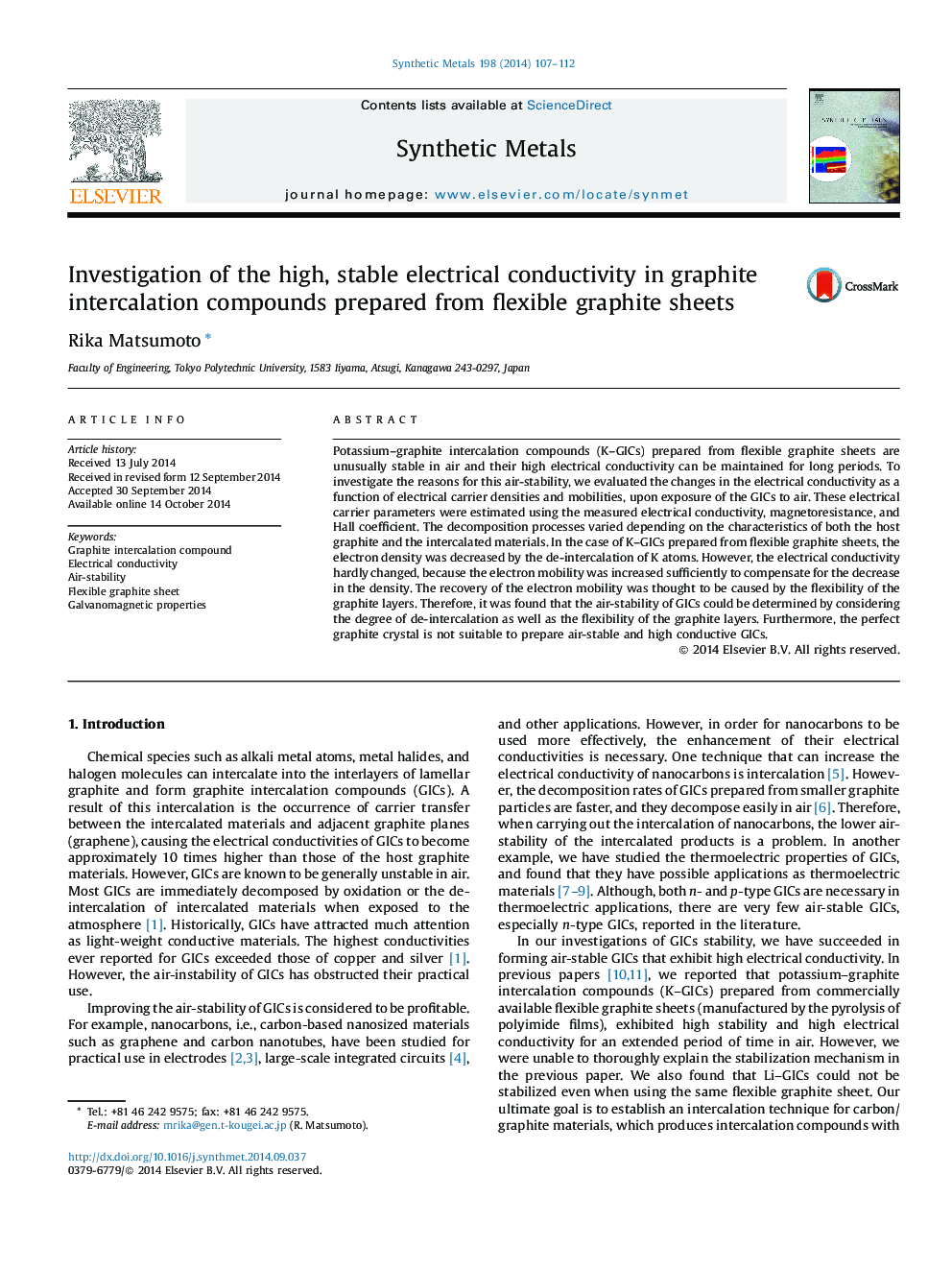| Article ID | Journal | Published Year | Pages | File Type |
|---|---|---|---|---|
| 1440721 | Synthetic Metals | 2014 | 6 Pages |
•The causes of air-stability in K–GICs prepared from flexible graphite sheets were founded.•Air-stable and high electrical conductivity of GICs depended on the recovery of carrier mobility during the de-intercalation.•The flexible nature of the graphite layer structures makes possible the increase in the carrier mobility.•A perfect graphite structure (like HOPG) is not suitable for synthesizing GICs that are exhibit high and stable electrical conductivity.
Potassium–graphite intercalation compounds (K–GICs) prepared from flexible graphite sheets are unusually stable in air and their high electrical conductivity can be maintained for long periods. To investigate the reasons for this air-stability, we evaluated the changes in the electrical conductivity as a function of electrical carrier densities and mobilities, upon exposure of the GICs to air. These electrical carrier parameters were estimated using the measured electrical conductivity, magnetoresistance, and Hall coefficient. The decomposition processes varied depending on the characteristics of both the host graphite and the intercalated materials. In the case of K–GICs prepared from flexible graphite sheets, the electron density was decreased by the de-intercalation of K atoms. However, the electrical conductivity hardly changed, because the electron mobility was increased sufficiently to compensate for the decrease in the density. The recovery of the electron mobility was thought to be caused by the flexibility of the graphite layers. Therefore, it was found that the air-stability of GICs could be determined by considering the degree of de-intercalation as well as the flexibility of the graphite layers. Furthermore, the perfect graphite crystal is not suitable to prepare air-stable and high conductive GICs.
Graphical abstractFigure optionsDownload full-size imageDownload as PowerPoint slide
